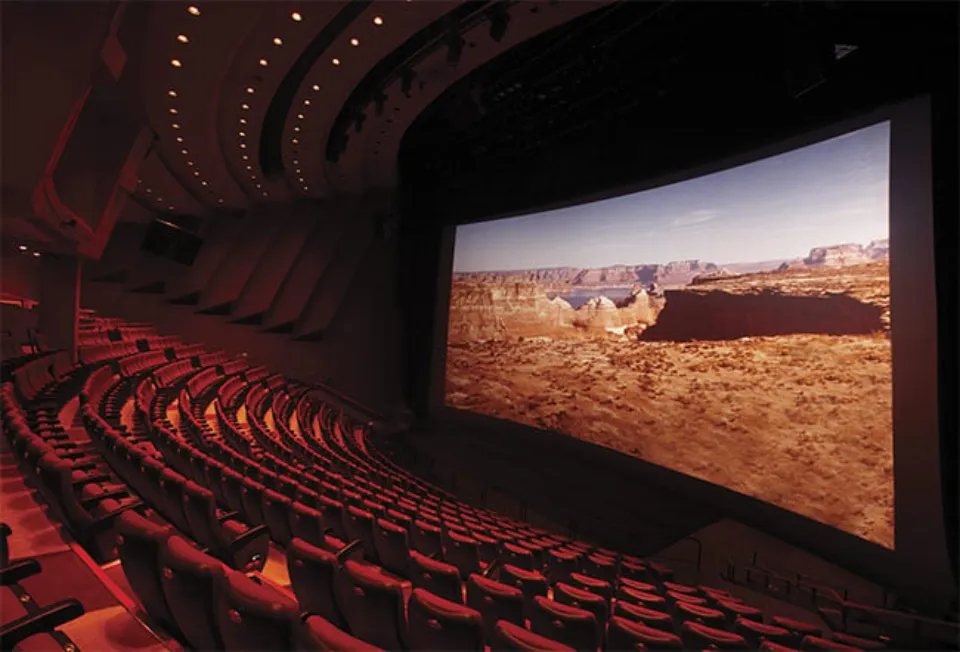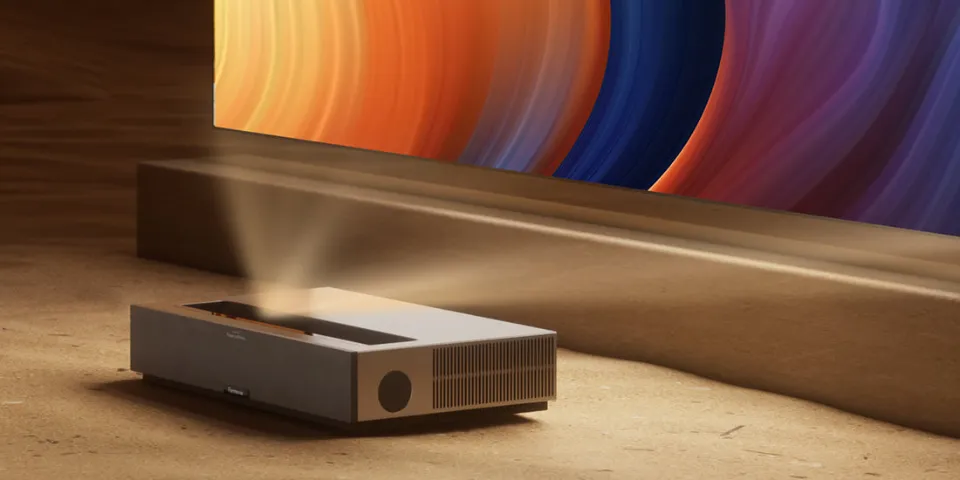When you are looking for a projector, the term “lumens” is frequently mentioned. However, what exactly are lumens, and why are they significant? This measurement, which is formally known as ANSI lumens, reveals the intensity of a light source. In the case of projectors, this is directly related to the setting in which the projector will be used. (Don’t worry; below, we give a quick breakdown of how many lumens are needed in various scenarios.)
Consequently, continue reading to find out the definition of lumens in a projector.” and find the best projector for your needs.
Table of Contents
What Does The Term “Lumen” In Projectors Mean?
Lumens, also referred to as ANSI lumens, are units of measurement used to describe how powerful or intense a light source is. The American National Standards Institute is referred to as ANSI, by the way. Different lumen levels or ranges are required for the numerous different scenarios involved.
Of course, candlelight is less powerful than, say, a bonfire or a light bulb. Because projection has always involved controlling light and how it is reflected or projected onto a particular screen or surface, lumens are related to projectors.
Don’t be intimidated by the numerous unfamiliar terms and specifications when deciding which projector to purchase for your home entertainment system or business presentations.
Also Read: What is ANSI Lumens?
Why Are Lumens Important?
Returning to the fundamentals, you must consider the most crucial elements, including lumens, screen size, and resolution (SD, HD, FHD, or UHD).
While device resolution and contrast ratio are important projector features, ANSI lumen count is another crucial element to take into account when evaluating a given device’s brightness objectively in terms of numbers as opposed to subjective terms like “dim” or “really bright.”
What Are The Lumen Counts Of Common Light Sources?
The following common light sources have the corresponding lumen counts, according to experts in projectors. They are arranged in order of lumen count, from lowest to highest.
- Candle: 14 lumens.
- Sunset: 400 lumens.
- Fluorescent office illumination: 400 lumens.
- Movie Set Lighting: 1,000 lumens.
- 100-Watt Light Bulb: 1,600 lumens.
- Residential LED DLP projector: 2,000 to 3,000 lumens or more.
- Commercial laser DLP projector: 5,000 lumens or more or more.
- Sunny Day: more than or equal to 100,000 lumens.
By positioning the screen in the shade or a darker corner, you can reduce the ambient light of outdoor projection, reducing the amount of concentrated 100,000-lumen lighting required to make your projection visible during the day.
You May Also Like: What Is A Film Strip Projector?
How Many Lumens Is Enough?
When looking for a new TV, you can compare models’ images side by side in the store and essentially assume that they will appear the same in your living room. However, projector images are more spatially constrained. Your lamp’s brightness requirement will depend on both the distance and the surrounding lighting.
As it is the most important factor, let’s start by discussing ambient light. A lamp of roughly 1,000–1,200 lumens ought to be sufficient to get a good picture if you’ll be using your projector in a completely dark room. But when we say “completely dark,” we mean “movie theater dark.” If you are unable to completely cover all of the windows in the room, you will have to watch TV at night because even filtered sunlight can distort the picture.
A brighter lamp is a wise choice if you want the option of turning on a few lights without ruining the image. The brightness should be sufficient to compete with indoor standard lighting or bleed-over from closed windows, which should be around 2,000 lumens. Unless you intend to use the projector in fully-lit areas, you should need anything with more than 3,000 lumens.
The amount of brightness you require will also depend on how far the light must travel. The size of the projected image will increase with distance from the screen. Most home theater applications should be able to get a good-sized screen with a distance of 6 to 8 feet. If you need to see farther away, get a lamp that is a little bit brighter—at least 1,500 lumens in a dark room or between 2,500 and 3,000 in moderate lighting.
What Level Of Brightness Is Best For Your Needs?
Remember that you can’t just buy a high lumen projector and expect to get excellent picture quality when you’re projector shopping. The best projector brightness for your needs can’t be determined in a one-size-fits-all manner.
The amount of brightness required to deliver a high-quality image is influenced by a number of variables. They have been covered in this article. The two factors that have the greatest impact on projector brightness requirements are, however, as follows:
- Ambient light
- Screen size
In relation to brightness, ambient light merits discussion because, if not controlled, it can distort the projected image. Ambient light is, by definition, light that is already present in a scene before any additional lighting is added.
Natural light coming in through the windows or standard room lighting are the most prevalent examples of this.
To produce high-quality images in areas with lots of lighting, the brightness must be increased. Lower brightness and a higher contrast ratio can be used in a room that is darker. For spaces with multiple uses, a lumen range of 2000 to 4000 is ideal.
Moving on to the subject of screen size, the higher brightness recommended for the projector to produce high-quality images the larger the screen you desire.

The Lumen Requirements Of Home Projectors
You should choose a projector with an ANSI lumen rating of less than 3,000 for a theater or home cinema setup. This is sufficient to cover a picture that is 80 inches to 100 inches in size (most homes require 80 inches, especially more modest or compact apartments).
Be aware that these devices make a big effort to control the ambient light level. The curtains and lighting in your living room should both be dimmable. However, it should be dark enough to reduce ambient light without completely darkening the space.
Bigger Screens Require More Lumens
A higher lumen count from your preferred home cinema projector is required if you want to project large images. Even though more lumens come at a higher cost, the image is at least less likely to fade in ambient light.
Under 3,000 Ansi Lumens
Superior color performance on a screen size of around 80 inches is typically the goal for those who select projectors with this level of brightness. To keep images vibrant while reducing the risk of fadeout, they must, however, tightly control ambient light.
Above 3,000 Ansi Lumens
Customers who want a projector with an Ultra HD 4K resolution and more than 3,000 ANSI lumens usually have more money to spend. More light is necessary to maintain vibrancy at this pixel density. Also, it is less affected by the effects of ambient light.
Brighter levels or more lumens do not always imply higher projector quality overall. Those variables depend on the setting and use. The majority of home theaters either opt for the less expensive option with less than 3,000 lumens or the more expensive option with more than 3,000 lumens.
The Lumen Requirements Of Business And Education Projectors
There are a couple of lumen thresholds to keep in mind for a variety of industries because business and education cover such broad areas.
Suggested Lumen Counts For Smaller Settings
Starting off, 3000–3999 ANSI lumens is the ideal range for smaller spaces like meeting rooms or classrooms. At a reasonable price, this setting effortlessly projects a screen that is 80 inches or larger. It’s best to only use projectors with these lumen levels when there is little ambient light.
Suggested Lumen Counts For Mid-sized Spaces
You should consider buying a projector that is 4000–4999 ANSI lumens if you’re in a medium-sized meeting space or classroom. Although the user doesn’t have to worry as much about ambient light because of the higher brightness, this still produces high-quality images of 80″+.
Suggested Lumen Counts For Large Settings
The final brightness level worth mentioning is 5000+ ANSI lumens. For use in large meeting rooms, exhibition halls, auditoriums, and other spaces, this offers a picture size of at least 100 inches. These projectors are powerful enough to operate effectively in conditions of intense ambient light.
Projector Lumen Counts Compared To Laser Projectors Vs. Led Projectors
The usual operating lumen output for lamp projectors is 2,000. Up to 3,500 lumens are possible with laser projectors. You can even ascend higher if you use optional equipment. Finally, LED projectors have a 2,000-lumen maximum instead.
Given that LED bulbs last longer and are less likely to overheat, lamps and LED projectors to differ from one another despite having similar lumen output in terms of image quality, sharpness, and contrast.
Conclusion
When looking for a projector, choosing high-lumen models alone won’t guarantee excellent image quality. Although brightness has an impact on projector performance, it is not the only factor that should be considered when evaluating a projector’s performance.
When you need a portable projector for on-the-go presentations at work or for office presentations while on vacation or business, a pico DLP projector with less than 1,000 lumens of brightness may be a better fit.




